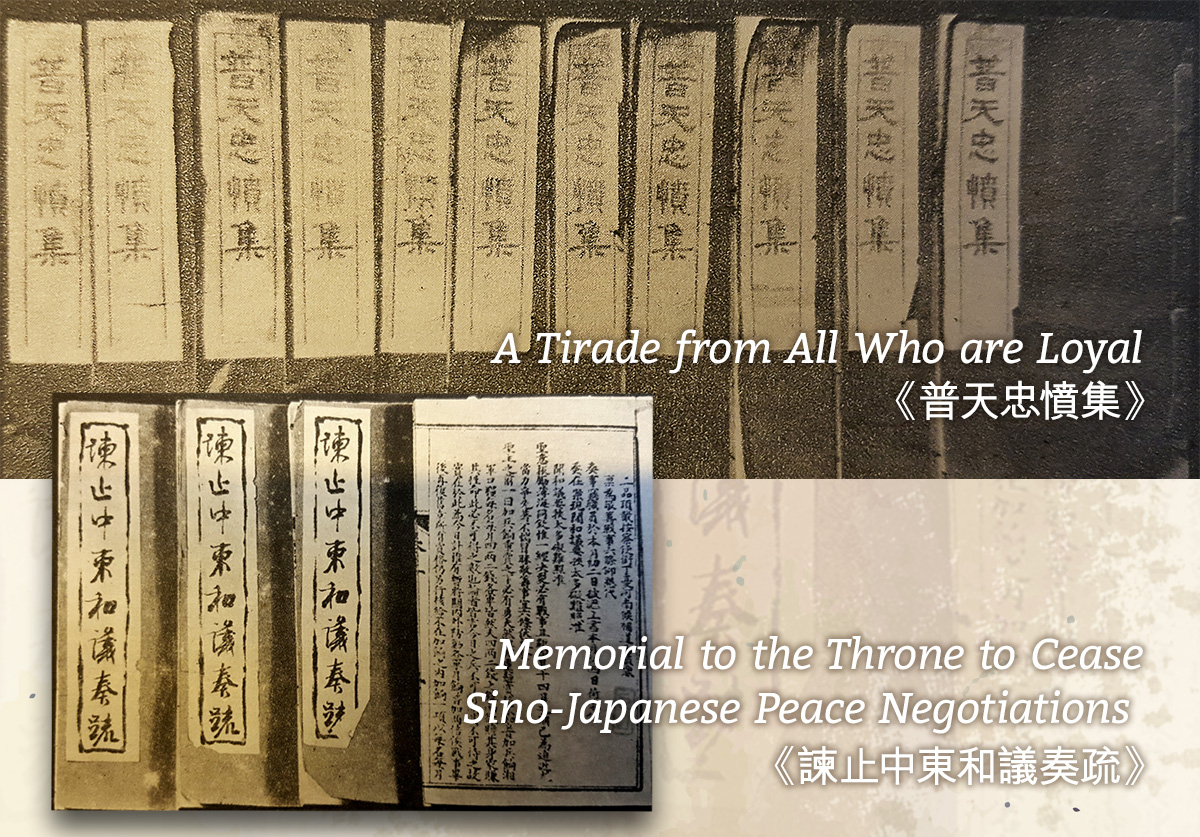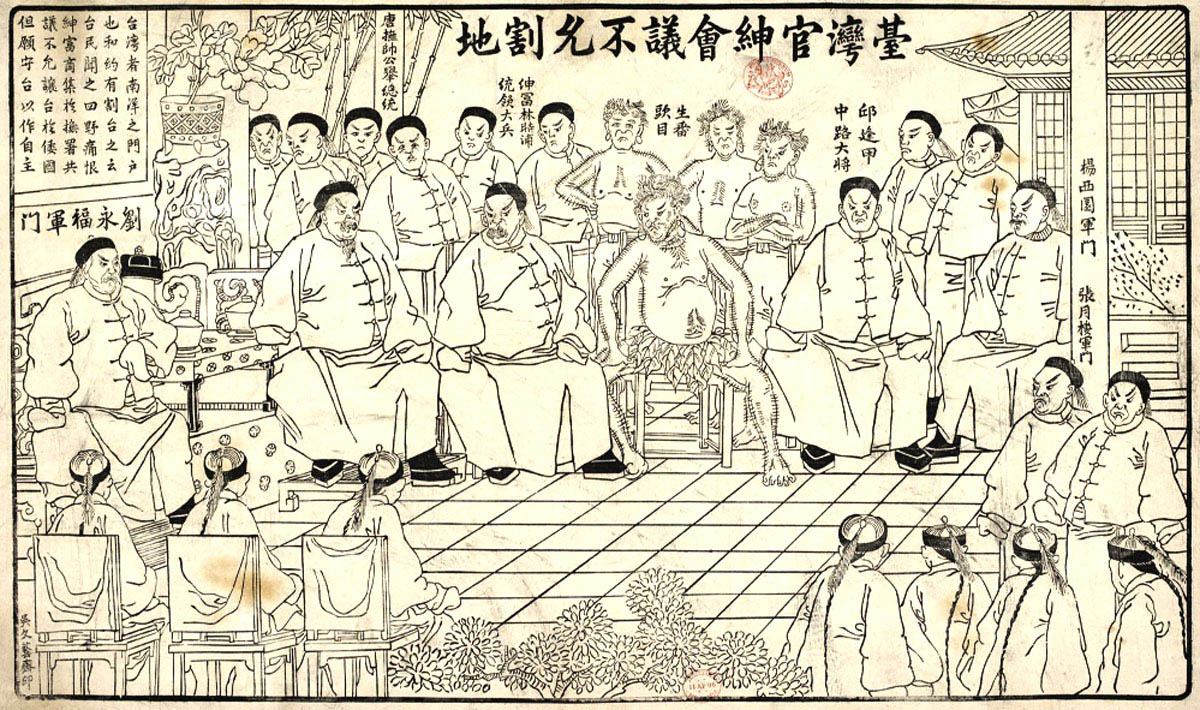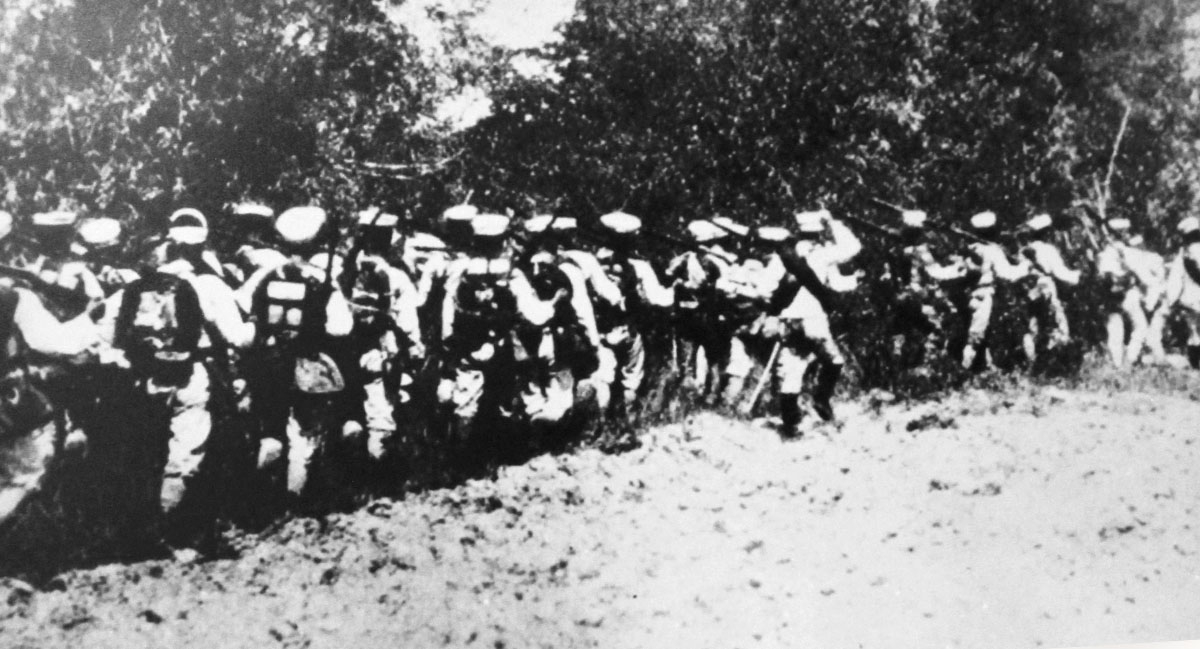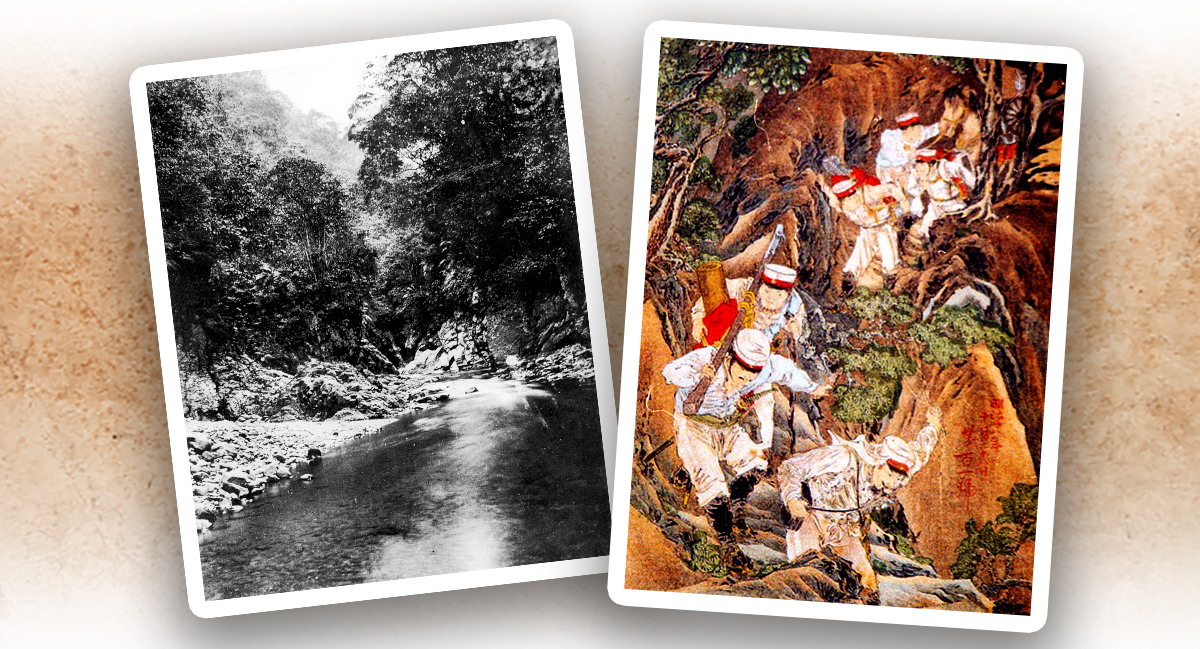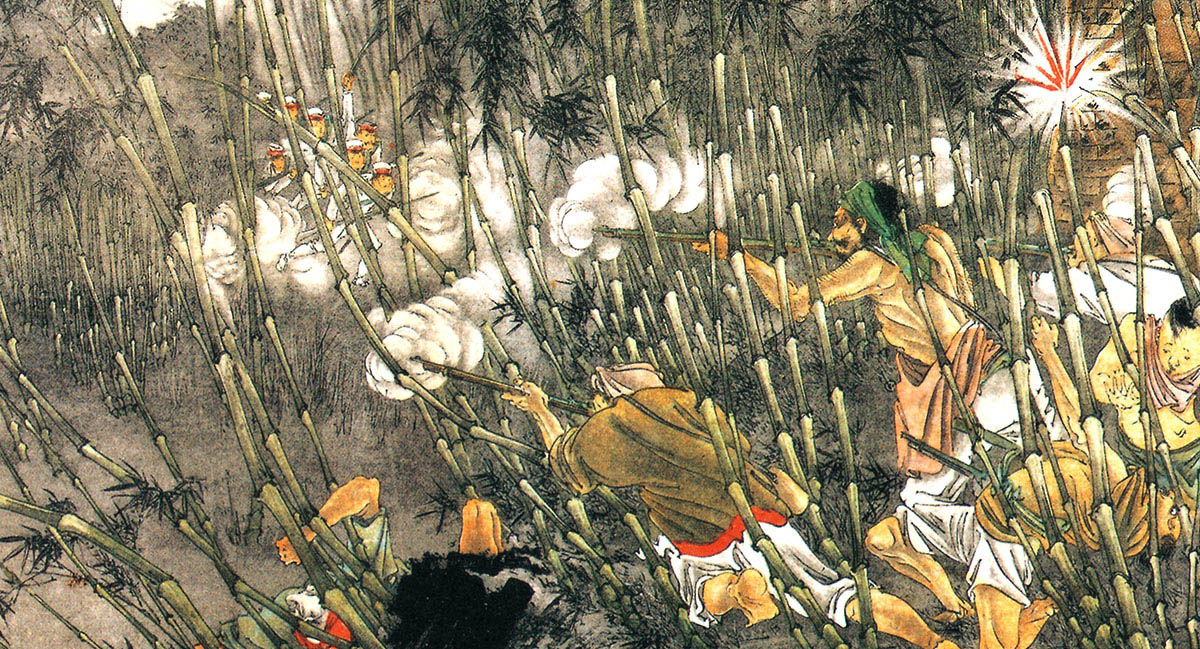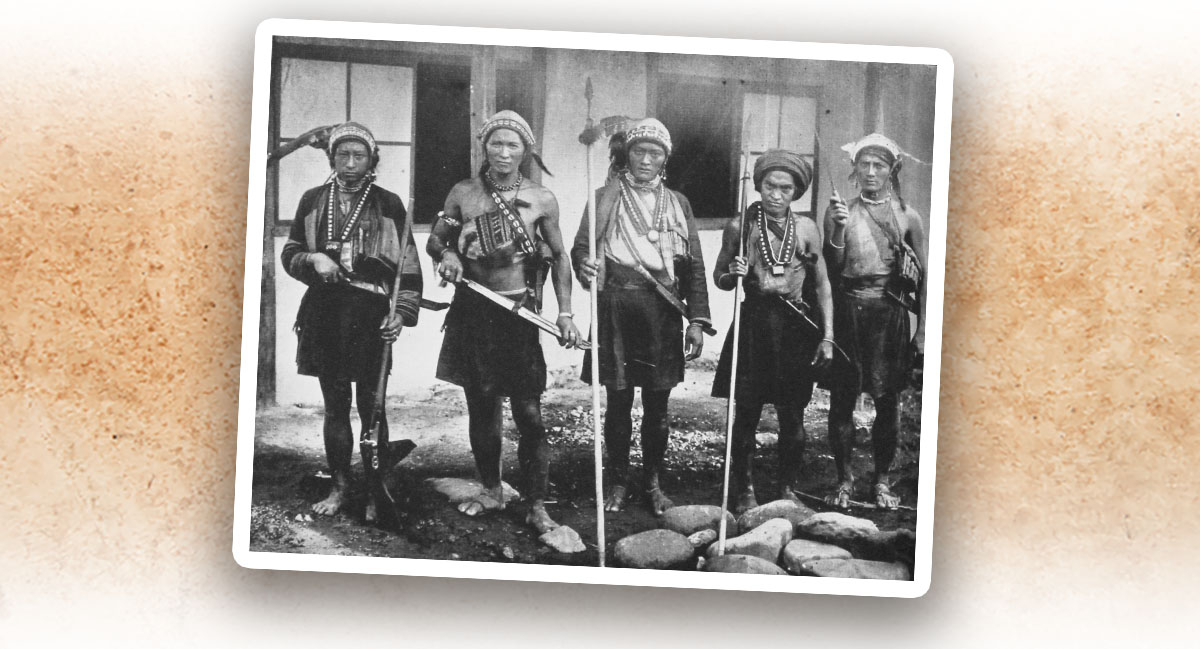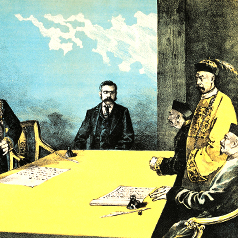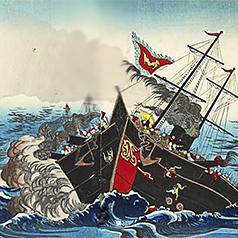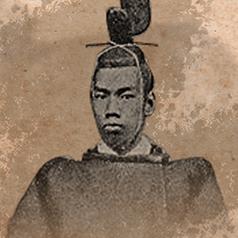China deemed itself the “heavenly kingdom” and perceived Japan as an insignificant “small country”. Deeply shocked by their defeat in the First Sino-Japanese War and angered by the harsh terms of reparation, most people in China favored resistance. Most notable was the movement led by Kang Youwei (康有為) in favor of treaty rejection, continued fighting and comprehensive reform (for which Kang pleaded with the Emperor by submitting a petition). The cession of Taiwan (台灣) also provoked an armed conflict between Taiwanese and Japanese forces over 6 months in what is called the Yiwei War (乙未戰爭).
Additionally, foreign powers were encouraged by China’s obvious military weakness to become more aggressive in expanding their territories within China, marked the beginning of a scramble for concessions in China. Frustrated with corrupt and incompetent officials, Chinese patriots stepped in to save the country by overthrowing the government, paving the way for the Chinese anti-Qing revolution under the leadership of Sun Yat-sen (孫中山). In short, the First Sino-Japanese War marked a watershed: China conceded that the Self-Strengthening Movement had failed and was left to deal with a national crisis in which people were demanding change.
|
|
What was the impact of the First Sino-Japanese War on China, Japan and the world? |
|
|
See answer below. |
A political cartoon reflects Japan’s victory over China in the First Sino-Japanese War. The people of China were shocked to learn of their defeat by such a small country.
A Tirade from All Who are Loyal (普天忠憤集), a compilation of poetry by common people who opposed China’s peace negotiation with Japan, and Memorial to the Throne to Cease Sino-Japanese Peace Negotiations (諫止中東和議奏疏), an appeal from court officials to the Emperor to cease peace negotiations. When the terms of the Treaty of Shimonoseki became known, there was a great public outcry all across China, with most rejecting the peace deal in favor of a war of resistance. Nevertheless, the Qing court ended up accepting the peace deal.
This print shows Taiwan officials and gentry refusing to cede land. The surrendering of Taiwan to Japan in the Treaty of Shimonoseki prompted outrage among the Taiwan populace, who were firmly against land cession and vowed to die resisting the Japanese. The resistance against Japan was mainly led by Tang Jingsong (唐景崧), Liu Yongfu (劉永福) and Qiu Fengjia (丘逢甲).
After the signing of the Treaty of Shimonoseki, Japan immediately began their mission to subdue the Taiwan people. On May 10, 1895, the Japanese government appointed Admiral Kabayama Sukenori as the first Japanese Governor-General of Taiwan as well as the commander of the region’s Japanese occupation force. On June 17, the Office of the Governor-General was set up in Taipei (台北).
On May 29, 1895, the landing of Japanese military at Aodi (澳底) in north Taiwan marked the beginning of Taiwan’s war of resistance. 1895 was known as the Yiwei year according to the Chinese calendar, and thus the war now known as the Japanese Invasion of Taiwan was also called the Yiwei War. Keelung (基隆) and Taipei were captured on June 3 and June 7 respectively. The Japanese adopted the strategy of moving through Taiwan from north to south to subjugate the entire island.
Dense forests and streams of 19th century Taiwan: Japanese occupation forces forging through Taiwan’s mountainous terrain, which were exploited by the Taiwanese to launch attacks on the Japanese army.
Japanese troops ambushed by Taiwanese militia in the bamboo forests of northern Taiwan. Despite the huge disparity in power, the militia and people of Taiwan fought bravely against their foes.
Possessing an absolute advantage in military forces, the Japanese swept south relentlessly, yet the Taiwanese militia and people refused to yield without a fight. In December 1895, the Liudui (六堆) army, formed by Hakka civilian militias in the Gaoping (高屏) region of southern Taiwan, made its last stand against the Japanese at the Huoxiao Village (火燒莊). The Japanese ended up burning Huoxiao Village and around 300 other villages to the ground, with a death toll of around 250 people.
Though the Taiwan people fought valiantly, they were no match for the well-trained, well-equipped Japanese army and sustained heavy casualties. However, their resistance also cost the occupation forces dearly, as more Japanese soldiers were killed or injured during their campaign to subdue Taiwan than in the First Sino-Japanese War.
Photo of Taiwan’s indigenous Highland people armed with traditional weapons. Provoked by Japanese abuse and looting, the indigenous peoples of Taiwan began a series of armed revolts against the Japanese army as soon as they set foot on Taiwan’s shores; this continued for many years. The persistent revolts took a heavy toll on the indigenous population, with some tribes being virtually annihilated. Nevertheless, they dealt a heavy blow to the morale of the Japanese rulers.
The impact of China’s defeat in the First Sino-Japanese War was enormous: China was faced with a growing risk of scramble for concessions; Kang Youwei and others proposed the implementation of sweeping reforms as the Self-Strengthening Movement came to an end. In November 1894, two months after China’s defeat in the Battle of the Yellow Sea, Sun Yat-sen formed the Revive China Society (興中會) to overthrow the Qing dynasty. The outcome of the First Sino-Japanese War marked the very turbulent beginning of the modern era in China and the game changing events that the 20th century had in store for the country.
|
|
What was the impact of the First Sino-Japanese War on China, Japan and the world? |
|
|
Having signed the Treaty of Shimonoseki following a devastating defeat to Japan, China was forced to cede Taiwan and the Penghu Islands (澎湖列島), pay a large sum of indemnity, and grant foreigners increased commercial access to China, allowing an influx of foreign capital. Moreover, China lost Korea and was forced into making concessions by allowing more settlements of foreign nationals in major Chinese cities, raising fears of scramble for concessions. People were deeply shocked by these public humiliations of their country and began to insist on resistance and change, leading to anti-Qing revolution. Meanwhile, Japan had enriched itself with an unprecedented amount of war reparations equivalent to four times its annual fiscal revenue, making rapid industrialization possible. By occupying Korea, Taiwan and the Penghu Islands, Japan gained a springboard for invading all of China, and became increasingly militaristic. Later, Japan’s rise in national strength would help it secure its status as a world power, and thus became a force to be reckoned with in the Far East. Its increasing dominance changed the balance of global power, ultimately altering the course of history in the Asia Pacific region. |
Source of most photos used in this feature piece: Fotoe, misc. photo sources.






